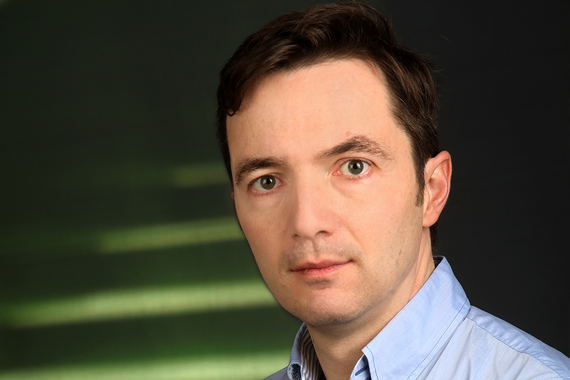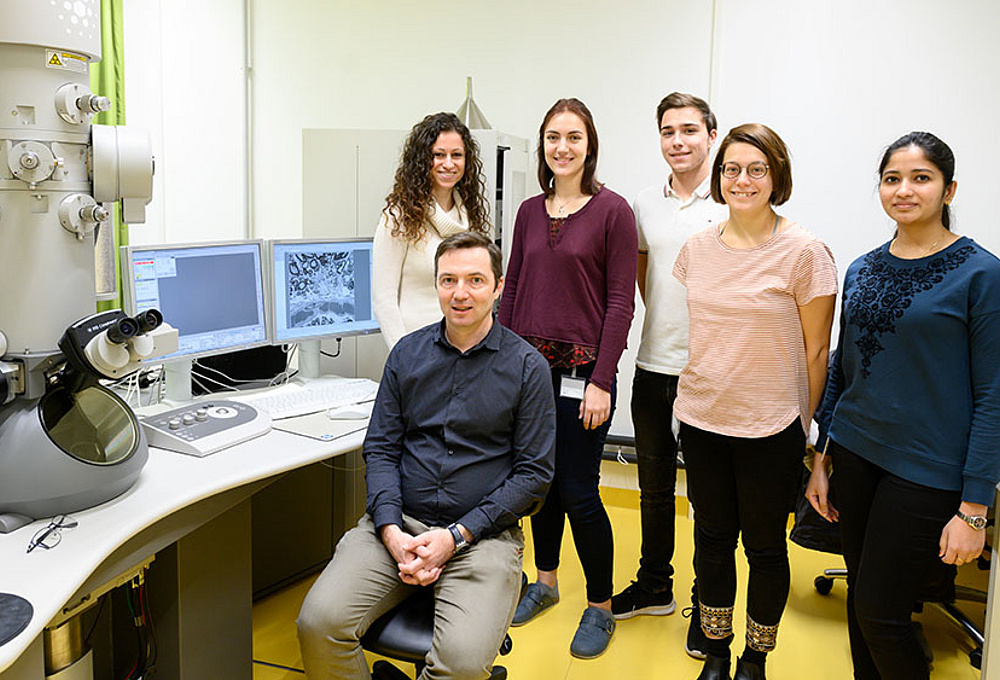-
The University
- Welcome
- Who we are
- Media & PR
- Studying
-
Research
- Profile
- Infrastructure
- Cooperations
- Services
-
Career
- Med Uni Graz as an Employer
- Educational Opportunities
- Work Environment
- Job openings
-
Diagnostics
- Patients
- Referring physicians
-
Health Topics
- Health Infrastructure
Research team Leitinger
Research focus Signaling
PI: Gerd Leitinger
Focus: The working group uses the latest electron microscopy methods. Iron deposits in the human brain are associated with neurodegenerative diseases, and these deposits are precisely localized in human samples using analytical electron microscopes. In another focus area, three-dimensional models of neural circuits are created using 3D electron microscopy to investigate how these circuits function.
Network: Within the Gottfried Schatz Center, we cooperate closely with the working groups led by Wolfgang Graier, Tobias Madl, and Klaus Groschner (signaling) and with the working group led by Irmgard Prassl (precision medicine). Other partners include Senka Holzer, Stefan Ropele (Medical University of Graz), Eva Roblegg (Karl Franzens University of Graz), and Claire Rind (Newcastle University, UK). We are closely networked with ELMINET Graz, BioTechMed-Graz, and the Austrian Society for Electron Microscopy.
Projects
Connectivity of a Locust’s Collision Detection Circuit
- We can learn a lot about how a neuronal networks could function by elucidating the wiring pattern of the network. This can be done by reconstructing the neurons in 3D and by mapping their synaptic connections, so that it becomes clear which neurons within the network can communicate with each other and how numerically strong the connections are. We aim to elucidate the wiring within the neuronal network of a locust’s collision detector. This detector is special because it enables the locust to avoid colliding with objects on a collision course. We thus are using special, serial section scanning electron microscope techniques to visualize the shape of the neurons and their synapses.
- Duration: 2019-2023
- Funded by: FWF
- Project partners: Claire Rind (Newcastle University, UK)
High Resolution Visualization of Iron Deposits in the Human Brain in Health and Disease
- Whereas iron is important for many life processes, a poor regulation of the iron household causes toxic chemical reactions that can even lead to cell death. Iron accumulates in certain brain areas in the ageing human brain, and it is not known why, and how, this iron storage takes place. Many neurodegenerative diseases also go along with an accumulation of iron in the brain. Here we combine analytical EM, to visualise the iron accumulation at high resolution, with quantitative magnetic resonance imaging to display the iron content in different brain areas, and mass spectrometry to measure the total iron content in these brain areas. This will enable us to study the way iron is stored in the brain.
- Duration: 2016-2021
- Funded by: FWF
- Project partners: Stefan Ropele (Medical Unviersity of Graz), Walter Gössler (University of Graz




